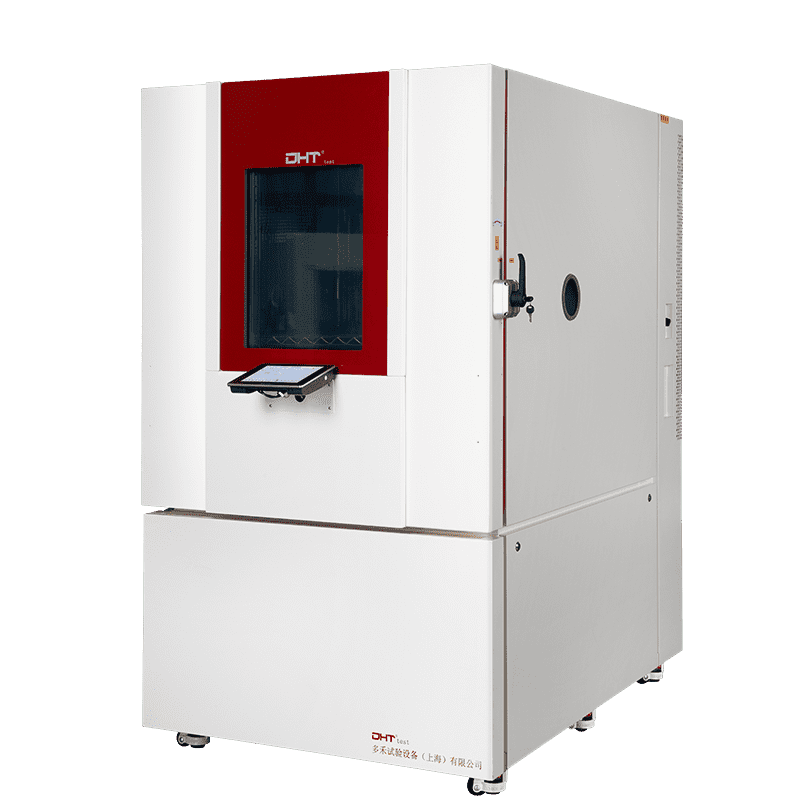Écrit par Robin
Ingénieur principal, Doaho Test (DHT®)
Aerospace & Defense Thermal Shock Testing: Chambers Compliant with MIL-STD-202 Method 107 and IEC 60068
Thermal shock occurs when equipment is exposed to abrupt temperature changes. These rapid transitions can cause materials to become brittle or expose latent defects, which is why engineers utilize thermal shock chambers to perform stress testing on components. Thermal shock testing systematically cycles products between extreme high and low temperatures, effectively “replicating environments between two or more temperature extremes” and “reducing the risk of premature product failure.” Aerospace and defense equipment—from avionics to satellite electronics—must endure these thermal cycles. For instance, MIL-STD-202G Method 107 specifically defines thermal shock testing procedures for electronic components, assessing their ability to recover after transitioning from a heated environment to arctic conditions. Compliance with such protocols is critical to certifying parts for use in aircraft, rockets, satellites, and radar systems.
Key Standards and Protocols
Thermal shock testing is governed by stringent military and international standards, including:
-
MIL-STD-202G, Method 107 (Thermal Shock): A U.S. military specification for electronic components requiring repeated transitions between extreme temperatures.
-
IEC 60068-2-14 (Change of Temperature): A global standard for electrotechnical equipment, specifying hot/cold exposure parameters and a maximum transfer time between chambers (typically ≤ 3 minutes).
-
GJB 150.5A-2009: China’s military standard for temperature shock testing of defense materials, analogous to MIL-STD-202.
-
Additional Specifications: Standards such as MIL-STD-810, IPC-TM-650, and DEF-STAN 00-35 govern related environmental stress and shock tests.
Meeting these standards—and any more stringent customer-specific requirements—is mandatory for the qualification of aerospace and defense hardware. Thermal shock chambers are engineered and calibrated to ensure every cycle adheres to the relevant methods and acceptance criteria.
Chamber Configurations
Most thermal shock test chambers use a vertically stacked design with separate hot and cold zones. A movable sample basket—typically driven by a ball screw—shuttles swiftly between the zones. Optional three-zone models include an intermediate ambient zone, providing greater control during the transition phase. For example, DHT® offers both two-zone and three-zone test chambers with volumes ranging from approximately 27 liters to 1000 liters. In a DHT® dual-zone system, the hot chamber can reach up to +220 °C (upgradeable to +250 °C), while the cold chamber can reach down to –80 °C. After each transfer, the chamber holds the product at the set high or low temperature for a specified duration (typically ranging from minutes to hours), accurately simulating mission profiles. This flexible design accommodates everything from small PCB assemblies to large avionics modules.
Key Performance Metrics
-
Transfer Time: Rapid movement between hot and cold zones is critical. While modern standards (such as IEC 60068-2-14) permit up to 3 minutes for transfer, advanced systems are significantly faster. DHT®’s ball-screw mechanism enables transfer in just a few seconds, allowing for multiple test cycles per day.
-
Dwell and Recovery: Each cycle includes a high/low temperature soak followed by a return to ambient conditions. Recovery time is measured from the end of the final exposure until the sample reaches room temperature. DHT® dual-zone test chambers typically achieve full sample recovery in under 15 minutes and outlet air recovery in less than 5 minutes, ensuring high testing throughput.
-
Temperature Stability and Uniformity: Precise PID (Proportional-Integral-Derivative) control maintains setpoint temperatures without overshooting. In a typical DHT® test chamber, temperature fluctuation is as low as ±0.3–1.0 °C, with uniformity across the chamber maintained within ±0.5–2.0 °C. Optimized airflow and insulation ensure consistent conditions throughout the chamber, which is essential for accurate, repeatable test results.
Real-World Aerospace & Defense Applications
-
Spacecraft and Satellites: Orbiting satellites experience dramatic temperature swings between direct solar exposure and the cold vacuum of space. Onboard electronics must endure these extremes, often ranging from +100 °C in sunlight to –100 °C in shadow. Thermal shock testing replicates these harsh transitions to ensure mission reliability.
-
High-Altitude Flight: Aircraft and UAV electronics may launch from +35 °C ground conditions and ascend rapidly to altitudes where ambient temperatures plummet to –50 °C or lower. Shock testing simulates these temperature shifts along with internal heat generation, validating the durability of avionics and sensor systems.
-
Radar and Missile Systems: High-performance radar and guidance electronics heat rapidly during operation and cool just as quickly when idle. Components are subjected to hot power-on and cold power-off cycles during testing to ensure they do not fail under thermal shock. These critical semiconductors are “rigorously tested for endurance and functionality” under extreme thermal transitions to guarantee reliable field performance.
By replicating these real-world environmental stresses within the aerospace test chamber and the defenset est chamber, engineers can identify weaknesses in materials, solder joints, or components before the product is deployed in the field.
Get Expert Assistance
Thermal shock testing is critical to ensuring the reliability of mission-critical systems. Contact DHT® to consult with our engineering team about configuring the ideal test system for your application. We can help you design a test profile that complies with MIL-STD-202 Method 107 (or your specified standard) and provide detailed technical documentation or white papers outlining chamber specifications. Reach out today to explore customized solutions, download technical resources, or schedule a demonstration of DHT® thermal shock testing technology.


